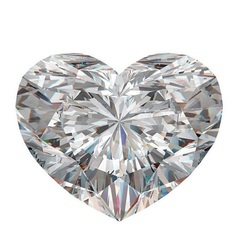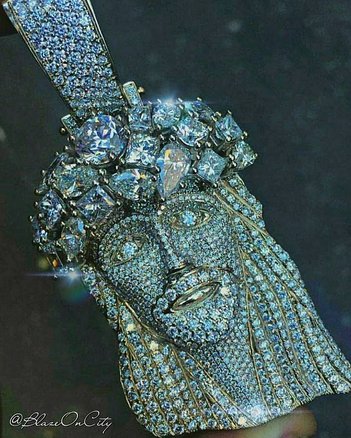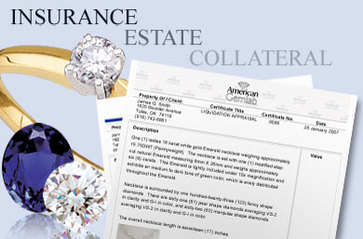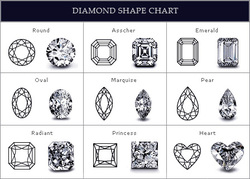
CHOOSING THE RIGHT DIAMOND
For most people, buying a diamond is a new experience, but that doesn't mean it should be overwhelming. Understanding a diamond's quality characteristics is straightforward and simple.
Crystal Clear Diamond's diamond education is designed to answer all your questions. It explains a diamond's characteristics, how those characteristics influence appearance, and which are more important than others. In just a few minutes you'll know everything you need to know to find your perfect diamond.
For most people, buying a diamond is a new experience, but that doesn't mean it should be overwhelming. Understanding a diamond's quality characteristics is straightforward and simple.
Crystal Clear Diamond's diamond education is designed to answer all your questions. It explains a diamond's characteristics, how those characteristics influence appearance, and which are more important than others. In just a few minutes you'll know everything you need to know to find your perfect diamond.

..........
GIA
DIAMOND CLARITY AND COLOR GRADING SCALE
..........

Diamond Care
Diamonds are one of the hardest substances on earth and are uniquely resistant to damage by heat or scratching. That said, diamonds are not indestructible. They can chip and break and are especially vulnerable at the girdle. Having diamonds set in a relatively protective setting, can help keep them safe. When wearing your diamond, you should be conscious of it on your finger, removing it when doing any type of activity that might expose it to a rough substance or a hard blow. For example, this might include gardening, doing the dishes, intense exercise, etc. Cleaning & Servicing Your Diamond During the course of ordinary wear, a diamond is exposed to dirt, dust, perspiration, makeup, and natural skin oils, as well as household chemicals, like chlorine and hairspray. Over time, these materials build up on a diamond, dulling its natural beauty. Luckily, cleaning a diamond is easy and requires very little time. We recommend having your diamond professionally cleaned and inspected once every six months or if it undergoes some form of trauma, such as being dropped or hit against a hard surface. These inspections help prevent the loss of your diamond solitaire in the event your ring has been inadvertently damaged.
Diamonds are one of the hardest substances on earth and are uniquely resistant to damage by heat or scratching. That said, diamonds are not indestructible. They can chip and break and are especially vulnerable at the girdle. Having diamonds set in a relatively protective setting, can help keep them safe. When wearing your diamond, you should be conscious of it on your finger, removing it when doing any type of activity that might expose it to a rough substance or a hard blow. For example, this might include gardening, doing the dishes, intense exercise, etc. Cleaning & Servicing Your Diamond During the course of ordinary wear, a diamond is exposed to dirt, dust, perspiration, makeup, and natural skin oils, as well as household chemicals, like chlorine and hairspray. Over time, these materials build up on a diamond, dulling its natural beauty. Luckily, cleaning a diamond is easy and requires very little time. We recommend having your diamond professionally cleaned and inspected once every six months or if it undergoes some form of trauma, such as being dropped or hit against a hard surface. These inspections help prevent the loss of your diamond solitaire in the event your ring has been inadvertently damaged.

Storing and Insuring your Diamond Jewelry
Because of their hardness, diamonds can scratch other diamonds, gemstones and jewelry metals. This is one of the most common ways jewelry is damaged. For this reason, store all jewelry, especially diamond jewelry, in individual soft cloth pouches when not being worn. Insuring Your Diamond Because unforeseen accidents do happen, we strongly recommend that you insure your diamond against loss, theft, and damage. Crystal clear diamonds can assist you with getting your jewelry appraised and insured.
sales@crystalcleardiamonds.com
Because of their hardness, diamonds can scratch other diamonds, gemstones and jewelry metals. This is one of the most common ways jewelry is damaged. For this reason, store all jewelry, especially diamond jewelry, in individual soft cloth pouches when not being worn. Insuring Your Diamond Because unforeseen accidents do happen, we strongly recommend that you insure your diamond against loss, theft, and damage. Crystal clear diamonds can assist you with getting your jewelry appraised and insured.
sales@crystalcleardiamonds.com









